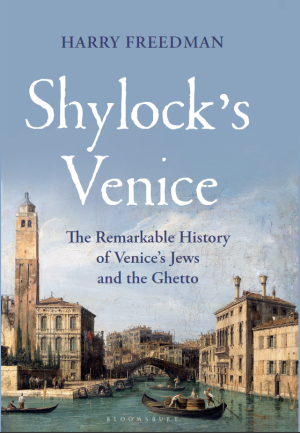Numerous studies of the Jewish ghetto in Venice have examined its architectural form, its place in Venetian social and political life, and the daily goings-on within its walls. In The Jewish Ghetto and the Visual Imagination of Early Modern Venice, Dana E. Katz demonstrates that the segregation of Jews, a tactic designed to reduce their visibility, in fact made their presence more prominent physically and symbolically. Vital to the Venetian economy, Jewish merchants, moneylenders, and physicians were permitted by the government to reside in parishes throughout Venice. In 1516, however, the Venetian Senate decreed that all Jewish residents move behind the walls of the Ghetto Nuovo in Cannaregio — a site surrounded by canals in the northern reaches of Venice, and far removed from the city’s economic and political centers. Senate legislation further stipulated that Christian guards maintain constant surveillance inside the ghetto and along the water, and lock the wall’s gates from sunset to sunrise.
Drawing on theories of spatial and societal practice by Michel Foucault, Michel de Certeau, and Henri Lefebvre, and on investigations into social control and urban space by Marvin Trachtenberg and Renzo Dubboni, Katz examines the impact of this new urban form of subjugation and ostracism — the first such enclosure in Italy — upon both Christians and Jews. Grounded in current visual culture theories, wherein sight and the motion of the eye inform the comprehension of space, Katz supports her analysis with archival documents.
Structured thematically in four chapters, Katz begins by comparing the Venetian ghetto’s peripheral location — “a physical embodiment of the diasporic condition” — with the central siting of ghettos in Florence and Rome. Paradoxically, as the ghetto buildings rose as high as nine stories to accommodate overcrowding, the ethnic enclosure assumed an outsized prominence on the Venetian skyline. As a further affront to Christian observers, the district’s pronounced verticality created an exalted platform for Jews to view the city, resulting in a ”reciprocity of gazes.” To prevent this disquieting “ocular contact,” in 1560 the Venetian Board of Trade required that Jews barricade all windows, balconies, and doors overlooking the canals.
Katz next examines the ghetto’s enclosure, differentiating ghettoization from convent life. Nuns, she writes, experienced a similar form of visual segregation in order to nurture spirituality. Following the same mandatory “optical seclusion” imposed on the Jews, authorities segregated the many other ethnic groups residing in Venice, including Turks, Germans, Greeks, Albanians, Dalmatians and Armenians. Examining interfaith interactions from the perspective of ghetto windows, Katz outlines how the very act of looking out a window was a state-sanctioned privilege denied the Jews in Venice, where “only … complete fenestral blindness could assure social order.” Another fundamental aspect of enforced Jewish isolation was to prevent interfaith touching and sexual relations. Katz argues that, in another paradox, the opaque walls provoked a tactile desire for forbidden movement.
Katz does not take us into the ghetto, but probes its edges, openings, and strictures within the Venetian urban environment. While this meticulously researched study is intended for the academic scholar, Katz provides intriguing new insights for the scholar and lay reader alike — from analysis of Jews’ tensions with their Christian hosts, to comparisons with other European ghettos and ethnic restrictions, offering ways of viewing early modern Venice “through ghetto eyes.”





